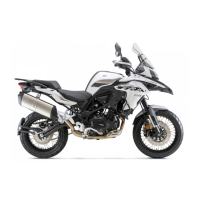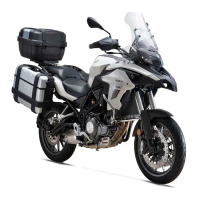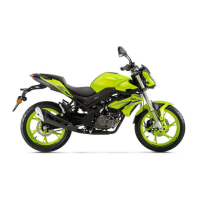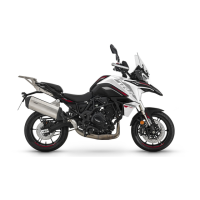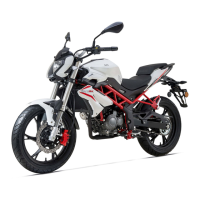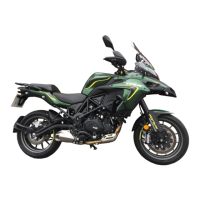Do you have a question about the Benelli 502C and is the answer not in the manual?
| Displacement | 500 cc |
|---|---|
| Transmission | 6-speed |
| Fuel Tank Capacity | 21 liters |
| Rear Brake | Single disc |
| Seat Height | 750 mm |
| Curb Weight | 217 kg |
| Engine Type | Liquid-cooled, 4-stroke, 2-cylinder |
| Max Power | 47.6 hp @ 8, 500 rpm |
| Max Torque | 45 Nm @ 6, 000 rpm |
| Front Suspension | Upside-down forks |
| Front Brake | Double Discs |
| Wheelbase | 1600 mm |
| Fuel System | EFI |
| Rear Suspension | Swingarm with monoshock |
Emphasizes owner's responsibility for safe operation and rider qualifications.
Covers pre-operation checks, visibility, awareness, and hazard avoidance for accident prevention.
Details essential protective gear like helmets, jackets, and boots for rider safety.
Warns about the dangers of carbon monoxide poisoning from engine exhaust.
Provides instructions on loading cargo to maintain stability and prevent accidents.
Advises caution with aftermarket parts, as they can pose safety hazards.
Gives essential instructions for safely securing and transporting the motorcycle.
Identifies key external parts of the motorcycle using a labeled diagram.
Details the layout and function of handlebar switches and the multi-function meter unit.
Explains operation of the main switch, steering lock, and key positions.
Describes the function of various warning lights, indicators, and gauges on the meter unit.
Details left and right handlebar switch operations for horn, lights, signals, and starting.
Explains how to enable/disable the ABS using the dedicated button and its operational modes.
Covers operation, adjustment, and lubrication of clutch, brake levers, and shift pedal.
Details fuel tank cap operation and critical safety guidelines for refueling.
Information on catalytic converter, seat removal, headlight adjustment, and rear shock absorber.
Describes sidestand function and the operation of the ignition circuit cut-off safety system.
Lists critical checks for fuel, engine oil, coolant, brakes, and tires before riding.
Details checks for clutch, throttle, cables, drive chain, wheels, pedals, chassis fasteners, and electricals.
Outlines correct procedure and conditions for starting the motorcycle's engine safely.
Explains how to use transmission gears for optimal power delivery and smooth riding.
Provides advice on riding style to improve fuel efficiency and reduce consumption.
Guidelines for the initial break-in period to ensure optimal engine longevity.
Details safe practices for parking, considering heat dissipation and vehicle stability.
Introduces the included tool kit and general guidelines for maintenance intervals.
Covers spark plug maintenance, engine oil/filter changes, and checking engine idling speed.
Details checking coolant levels, changing coolant, and replacing the air filter element.
Covers throttle grip, valve clearance, tires, clutch/brake levers, pedals, and sidestand maintenance.
Guides on checking brake pads, fluid levels, and changing brake fluid for optimal braking.
Details drive chain slack, cleaning, lubrication, and maintenance of control cables.
Covers checking steering, front fork, and wheel bearings for proper function and wear.
Provides instructions for battery maintenance, charging, storage, and fuse replacement.
Covers checks for lighting systems and provides charts for diagnosing engine and starting issues.
Guides on diagnosing and addressing engine overheating problems, including coolant system checks.
Advises on special cleaning products and methods for matte finished parts to avoid damage.
Outlines procedures for cleaning the motorcycle, including specific steps for harsh conditions.
Provides instructions for both short-term and long-term storage to protect the motorcycle.
Lists physical dimensions, weight, engine type, displacement, and recommended fluids.
Details frame type, clutch, transmission, final drive, fuel capacity, and recommended fuel.
Lists tire sizes, brake system details, and suspension travel specifications.
Details electrical system voltage, ignition, charging, and battery model/capacity.
Lists specifications for all bulbs and the ratings for various fuses in the electrical system.
Explains how to find and record VIN, engine serial number, and model label for identification.
Locates the diagnostic connector and describes the B-Box device's function for data tracking.
Describes how the ECU stores vehicle data for diagnostics and research, and data disclosure policy.

